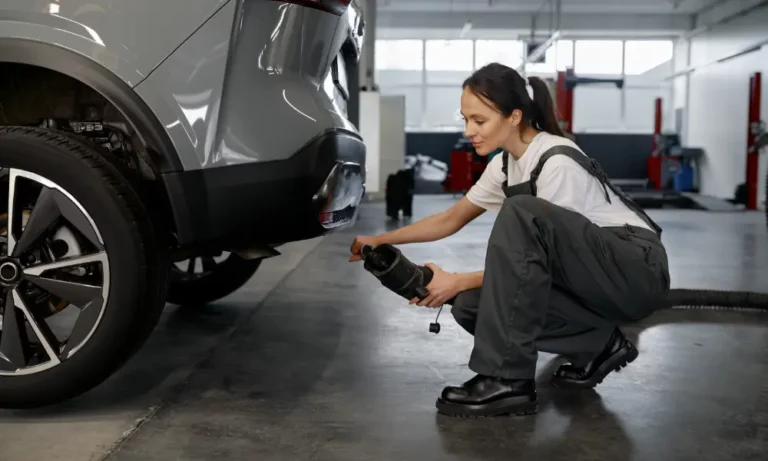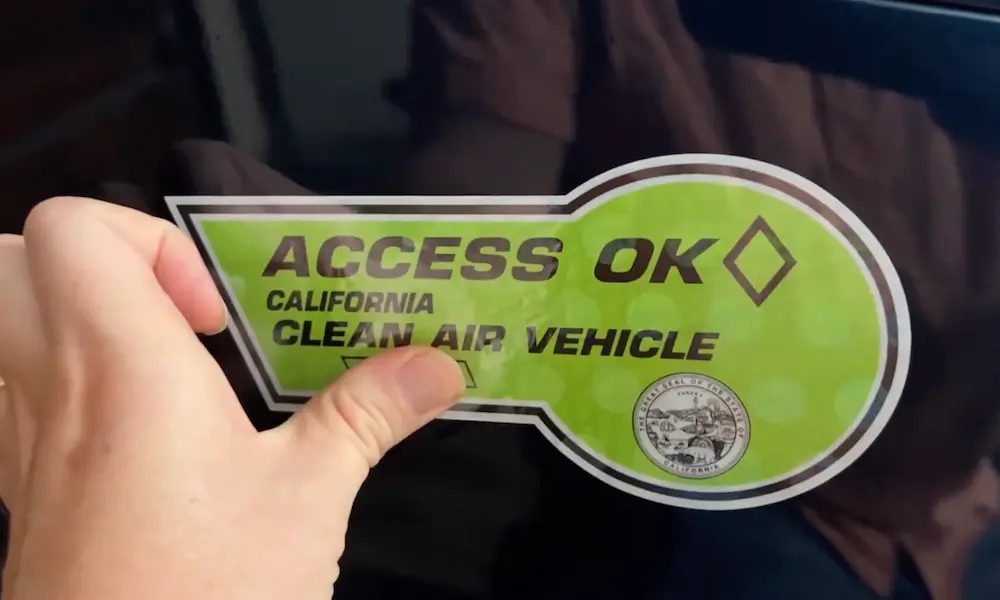When your vehicle fails an emissions test twice, it throws a wrench into your usual routine. Different states have varied regulations, but commonly, you’ll need to repair your car and pass the test to renew your registration.
If you’re curious about the potential outcomes and next steps, including possible waivers and legal implications, please continue reading the following content.
Consequences of Failing an Emissions Test
If your vehicle doesn’t pass the emissions test, it directly affects your ability to legally register and drive your car. It may also lead to financial penalties and issues with your car insurance.
Immediate Impact on Registration
Your DMV Registration: If you fail an emissions test, most states won’t allow you to register your vehicle. Without a current registration, you’re not legally permitted to drive your car. You’ll likely need to have your car repaired and retested within a specific time frame to obtain a passing grade and successfully register your vehicle.
Potential Legal and Financial Penalties
Driving Without Registration: Getting behind the wheel of your unregistered vehicle is illegal and could lead to traffic citations, fines, and impoundment of your vehicle.
Impact on Car Insurance: Continually failing emissions tests can have a broader impact. There’s a chance your car insurance provider may deem you at higher risk if you’re driving an unregistered car or not adhering to state regulations, potentially affecting your insurance rates or coverage status.
Remember, every state has its own rules regarding emissions testing and failure protocols. It’s essential to address any issues promptly to avoid these consequences.
First Steps After a Failed Emissions Test
After your vehicle has failed an emissions test for the second time, it’s essential to understand the details of the failure and to reach out to a professional for diagnosis.
Understanding the Test Results
Your emissions test report is crucial; it shows why your vehicle didn’t pass. This could range from excessive emissions that surpass standards, to a malfunctioning component linked to emissions control.
The check engine light being on is often a tell-tale sign of the latter. When you have the report, look for specific trouble codes that can point you towards the problem.
Seeking Professional Diagnosis
Once you’ve reviewed your test results, your next best step is to visit a certified mechanic. They will use the trouble codes from your test results to diagnose the issue accurately. Remember that getting a timely and accurate diagnosis is vital to fixing your vehicle and passing the emissions test.
Also, driving with a failing emissions system may lead to more significant issues down the road, so it’s best to address these concerns promptly.
Repair Process and Options
When your vehicle fails an emissions test twice, it’s crucial to understand the necessary repairs, potential costs, and options for financial assistance or waivers that may be available to you.
Let’s explore what you need to consider to get back on the road legally.
Common Repairs Needed
Typically, when your vehicle fails an emissions test, common repairs that might be needed include replacing the catalytic converter, oxygen sensor, or making specific emissions-related repairs. Your car’s on-board diagnostics (OBD) system often identifies these parts as sources of inefficiency.
- Catalytic Converter: Converts harmful gases into less harmful pollutants
- Oxygen Sensor: Measures the amount of oxygen in the exhaust gases
Exploring Repair Costs and Assistance
The repair costs for emissions failures can vary greatly depending on the parts and labor required. It’s essential to shop around and get a few quotes from trusted mechanics.
If you’re facing economic hardship, you might be eligible for financial assistance or repair programs offered by some states or non-profit organizations that can help reduce the burden of costly repairs.
- Cost Variables: Part prices, labor rates, vehicle make and model
- Assistance Programs: State-specific, income-based, may cover partial/full repair cost
Considering an Emissions Waiver
Should the repair costs be prohibitive, you might consider applying for an emissions waiver. Waivers are granted in certain situations where despite making a considerable effort, the car cannot pass the test.
This typically requires proof of spending a minimum amount on emissions-related repairs without success, and you’ll need to check the specific requirements and availability in your state.
- Waiver Conditions: Minimum spent on repairs, proof of attempts to fix issues
- State Regulations: Vary by location, may depend on vehicle age or other factors
Remember, the goal is to repair your vehicle in the most cost-effective way without compromising on the quality of repairs, while also considering the options provided by your state if costs become a significant hurdle.
Retesting and Driving After Repairs
Once your vehicle has undergone the necessary repairs after a failed emissions test, it’s important to know the correct steps for retesting and how to drive your vehicle post-repair for the best results.
Retesting Procedures
After addressing the issues that led to the emissions failure, you’ll need to take your vehicle back to an inspection station for a retest. It’s plausible to schedule a re-test once your car’s repairs are complete. Specific guidelines can vary, but let’s look at a typical process:
- Ensure all repairs are documented with receipts or work orders.
- Take your vehicle to the original inspection station or one that is authorized for emissions testing.
- Present any required paperwork to the testing personnel, such as repair documentation or prior test results.
- Follow the instructions from the testing personnel for the retest.
Remember, the retest might be free if done within a specific timeframe or at the same station where the initial test was failed.
Post-Repair Driving Recommendations
After making repairs, it’s advisable to drive your car for at least a week before heading back for a retest to ensure that all the on-board diagnostics have had enough time to reset. This is important because:
- Driving allows the car’s systems to re-calibrate, ensuring a more accurate retest.
- Emissions levels normalize after the vehicle has been driven for some time post-repair.
Please be aware that continuing to drive without a valid registration and emissions sticker can lead to fines and tickets, so it’s best to sort these issues promptly. And above all, driving with confidence knowing that you’re doing your part for the environment and complying with the law.
Long-Term Considerations
When your vehicle fails an emissions test twice, it’s essential to think about more than just the immediate steps to get back on the road. The long-term health of your vehicle, the environment, and your personal health are at stake.
Keeping Your Vehicle Smog-Compliant
Regular maintenance: is key to keeping your vehicle smog-compliant. This means sticking to a schedule for things like oil changes and checking your coolant levels, which can affect your car’s emissions.
Remember, a well-maintained engine is less likely to produce excess pollutants. Make engine oil checks and changes a part of your routine. Not only does this help your car run efficiently, but it also minimizes harmful emissions.
Impact of Emissions on Health and Environment
Failing to keep your vehicle smog-compliant doesn’t just risk further test failures; it has a direct impact on air quality. Pollutants from vehicles contribute to smog and poor air quality, which can lead to respiratory problems and harm the environment.
By ensuring your car remains smog-compliant, you’re playing a part in reducing harmful emissions and protecting community health.
Remember, the choices you make in maintaining your vehicle extend beyond immediate consequences, affecting both your health and the environment in the long run.
Conclusion
If your vehicle has failed an emissions test for the second time, it’s crucial to understand that the implications vary by state. Typically, you may be faced with two paths: receiving a waiver or being unable to renew your vehicle registration. A waiver can be an option if you’ve demonstrated attempts to repair the issue, while not passing can lead to registration renewal being blocked.
- Waiver Eligibility: You may qualify for a waiver as an acknowledgment of your repair efforts, as long as you meet certain criteria including expenditure thresholds.
- No Renewal: Without a waiver, you might not be able to legally drive your vehicle as the registration cannot be renewed.
It’s important to address any repair needs promptly after the first failure to avoid these complications. If you’re concerned about the costs, check if you can apply for an extension or a waiver due to financial hardship.
Remember, each state has its own set of rules and it’s wise to get familiar with your local regulations. Failing an emissions test twice does not mark the end of the road for your vehicle, but it does signal a need for action to ensure compliance and continued use of your vehicle.















